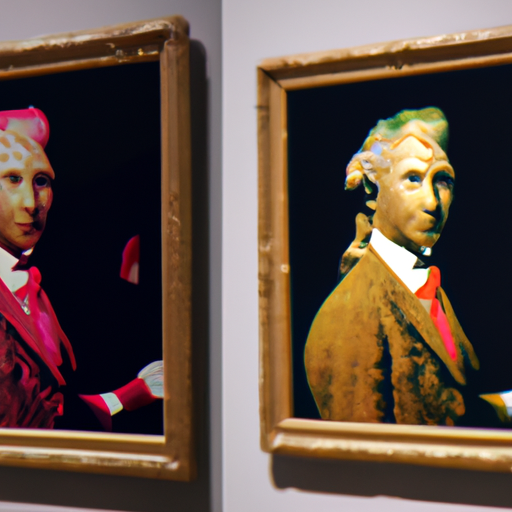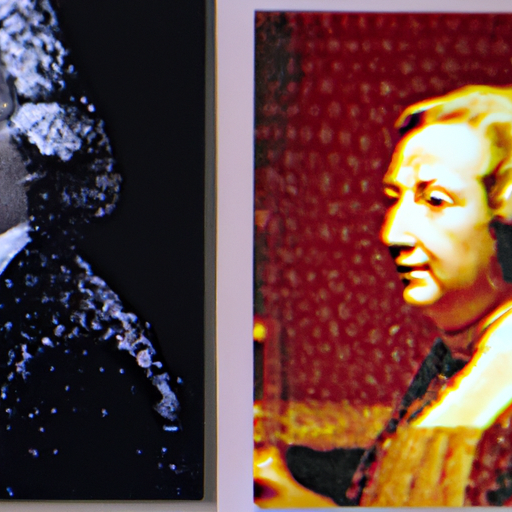
-
Table of Contents
The Impact of AI on Art Restoration and Preservation

Art restoration and preservation have always been crucial in maintaining the cultural heritage of humanity. Over the years, advancements in technology have played a significant role in improving the techniques and processes involved in restoring and preserving artworks. One of the most recent and promising technologies in this field is Artificial Intelligence (AI). AI has the potential to revolutionize art restoration and preservation by enhancing accuracy, efficiency, and accessibility. In this article, we will explore the impact of AI on art restoration and preservation, examining its benefits, challenges, and future prospects.
1. Enhancing Accuracy and Precision
Art restoration requires meticulous attention to detail and a deep understanding of the artist’s original intent. AI algorithms can analyze and interpret vast amounts of data, enabling restorers to make more accurate decisions. For instance, AI can analyze high-resolution images of an artwork to identify minute details, such as brushstrokes, color variations, and texture. This analysis helps restorers understand the artist’s technique and style, allowing them to recreate the original work more faithfully.
Moreover, AI algorithms can detect and correct imperfections in artworks, such as cracks, discoloration, and fading. By comparing the current state of an artwork with its original condition, AI can suggest precise restoration techniques and materials. This level of accuracy minimizes the risk of damaging the artwork during the restoration process.
2. Improving Efficiency and Speed
Traditional art restoration methods often require extensive manual labor and time-consuming processes. AI can significantly improve efficiency by automating certain tasks and reducing the time required for restoration. For example, AI algorithms can analyze large databases of historical documents, photographs, and other reference materials to gather information about an artwork’s original appearance. This information can then be used to guide the restoration process, saving restorers valuable time in research and analysis.
Additionally, AI-powered tools can automate repetitive tasks, such as removing dust and scratches from scanned images of artworks. This automation allows restorers to focus on more complex and creative aspects of restoration, ultimately speeding up the overall process.
3. Accessibility and Preservation of Cultural Heritage
Art restoration and preservation have traditionally been limited to a select few experts and institutions due to the high costs and specialized knowledge required. However, AI has the potential to democratize access to art restoration and preservation by making it more accessible and affordable.
AI algorithms can be trained to recognize and restore various art styles, enabling non-experts to participate in the restoration process. This democratization of art restoration can empower local communities and individuals to preserve their cultural heritage without relying solely on external experts.
Furthermore, AI can aid in the preservation of artworks by creating digital archives and virtual replicas. High-resolution scans and 3D models generated by AI algorithms can capture the intricate details of an artwork, ensuring its preservation even in the face of physical deterioration or damage. These digital archives can also facilitate research, education, and public access to artworks that may be geographically distant or too fragile to be displayed.
4. Challenges and Ethical Considerations
While AI offers numerous benefits to art restoration and preservation, it also presents certain challenges and ethical considerations that need to be addressed.
a. Authenticity and Originality: AI algorithms can generate highly realistic imitations of artworks, raising concerns about the authenticity and originality of restored pieces. It is crucial to clearly distinguish between original artworks and AI-generated replicas to maintain the integrity of the art market and ensure transparency for collectors and art enthusiasts.
b. Bias and Interpretation: AI algorithms are trained on existing datasets, which may contain biases or subjective interpretations. These biases can influence the restoration decisions made by AI systems, potentially altering the artist’s original intent. It is essential to carefully curate and diversify training datasets to minimize bias and ensure a faithful restoration process.
c. Conservation Ethics: AI algorithms may suggest restoration techniques that go against conservation ethics, such as overpainting or altering the original materials. Restorers must strike a balance between preserving the artwork’s historical integrity and enhancing its aesthetic appeal.
5. Future Prospects and Innovations
The field of AI in art restoration and preservation is still evolving, and several exciting prospects and innovations lie ahead.
a. Augmented Reality (AR) and Virtual Reality (VR): AR and VR technologies can provide immersive experiences that allow viewers to explore and interact with restored artworks virtually. These technologies can bridge the gap between physical and digital art, enabling people to appreciate and study artworks in new and engaging ways.
b. Deep Learning and Neural Networks: Deep learning techniques and neural networks can enhance AI algorithms’ ability to analyze and interpret complex artistic styles and techniques. This advancement can lead to more accurate restoration decisions and a deeper understanding of an artist’s unique approach.
c. Collaborative Restoration: AI can facilitate collaborative restoration efforts by connecting experts, enthusiasts, and communities worldwide. Online platforms and tools powered by AI can enable real-time collaboration, knowledge sharing, and collective decision-making, fostering a global community dedicated to art restoration and preservation.
Summary
Art restoration and preservation are undergoing a transformative phase with the integration of AI technologies. AI enhances accuracy, precision, efficiency, and accessibility in the restoration process. It democratizes art restoration, making it more accessible to local communities and individuals. However, challenges such as authenticity, bias, and conservation ethics need to be addressed. The future of AI in art restoration holds promising prospects, including augmented reality, deep learning, and collaborative restoration. By leveraging the power of AI, we can ensure the preservation and appreciation of our cultural heritage for generations to come.
